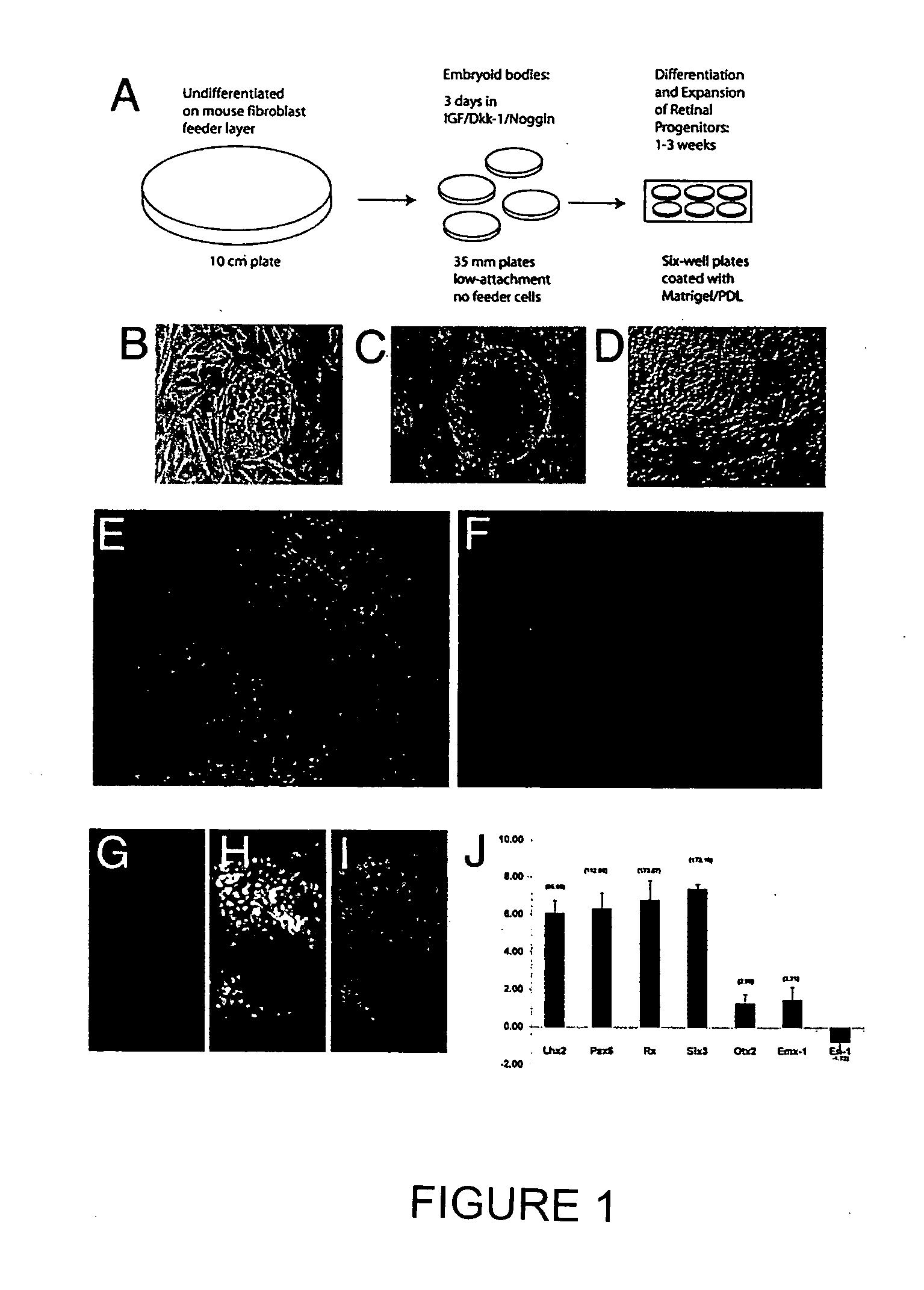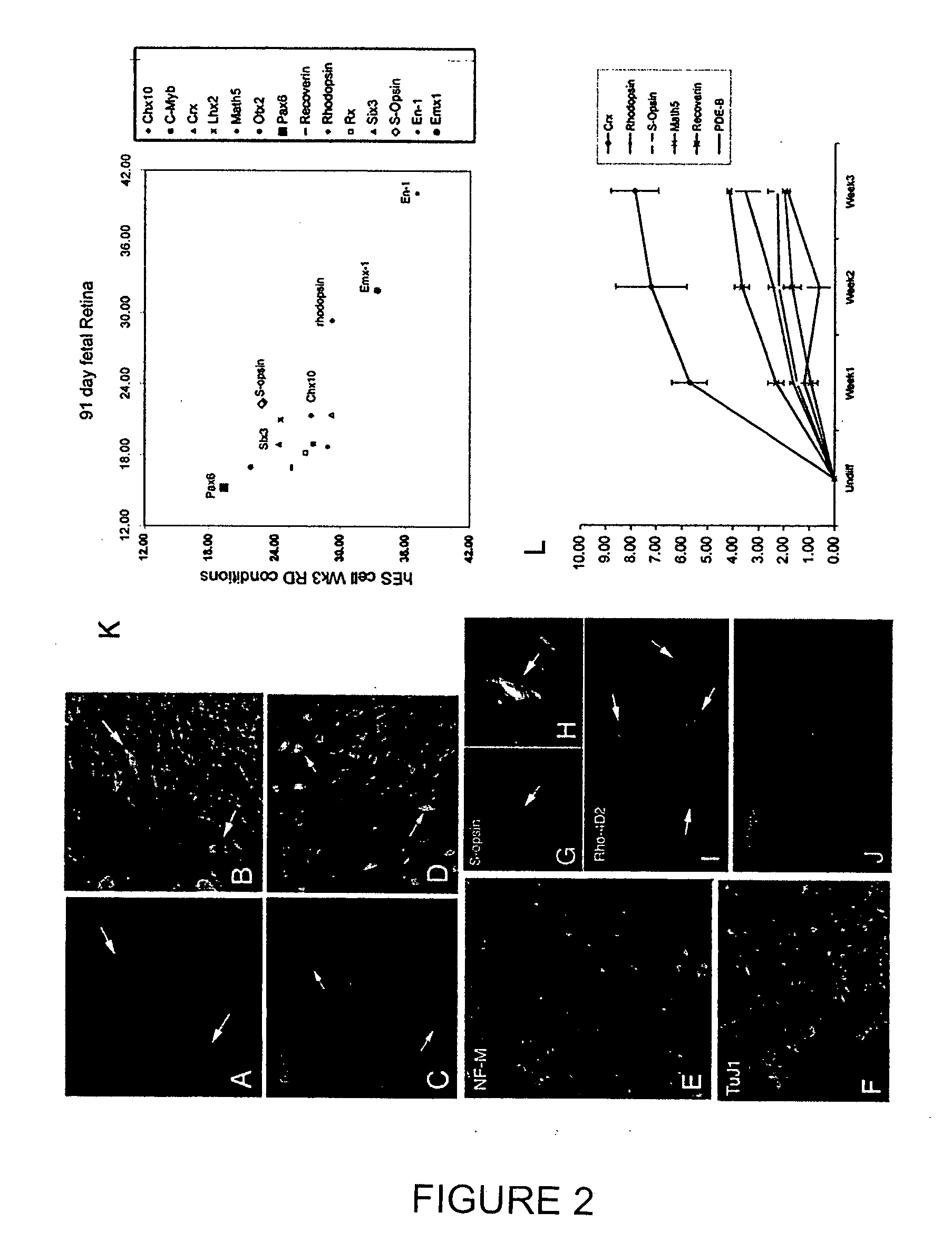Method of generating human retinal progenitors from embryonic stem cells
a technology of embryonic stem cells and human retina, which is applied in the field of generating human retinal progenitors from embryonic stem cells, can solve the problems of difficult to obtain sufficient quantities of human retinal progenitors from primary tissue, and the current treatment of these diseases remains unsatisfactory
- Summary
- Abstract
- Description
- Claims
- Application Information
AI Technical Summary
Benefits of technology
Problems solved by technology
Method used
Image
Examples
examples
[0110] Methods are shown to be developed for deriving retinal neurons from human embryonic stem cells (hES). To direct the ES cells to an anterior neural fate, we treated embryoid bodies with a combination of noggin (a potent endogenous inhibitor of the BMP pathway) and Dickkopf-1 (dkk1; a secreted antagonist of the Wntlbeta-catenin signaling pathway) and IGF-1. The embryoid bodies were cultured for 3 days in the three factors (FIG. 1a-d) and then transferred to 6 well plates coated with either Matrigel or laminin where they were allowed to attach. The cells were then maintained in the same medium, with bFGF added, for an additional three weeks; we refer to this protocol as retinal determination (RD) conditions.
[0111] The presumptive eye field is defined by a group of transcription factors expressed in this region (eye field transcription factors; EFTFs), including ET, Rx, Pax6, Six3, Lhx2, tll and Optx2 / Six6. After the ES cells had been exposed to the RD conditions for one, two or...
PUM
| Property | Measurement | Unit |
|---|---|---|
| concentration | aaaaa | aaaaa |
| concentration | aaaaa | aaaaa |
| concentration | aaaaa | aaaaa |
Abstract
Description
Claims
Application Information
 Login to View More
Login to View More - R&D
- Intellectual Property
- Life Sciences
- Materials
- Tech Scout
- Unparalleled Data Quality
- Higher Quality Content
- 60% Fewer Hallucinations
Browse by: Latest US Patents, China's latest patents, Technical Efficacy Thesaurus, Application Domain, Technology Topic, Popular Technical Reports.
© 2025 PatSnap. All rights reserved.Legal|Privacy policy|Modern Slavery Act Transparency Statement|Sitemap|About US| Contact US: help@patsnap.com



